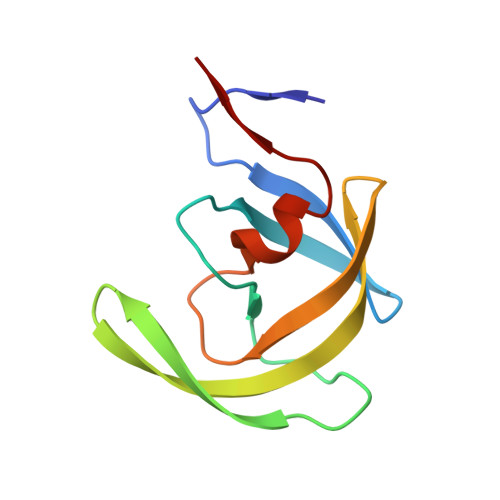HIV-1 protease inhibitors from inverse design in the substrate envelope exhibit subnanomolar binding to drug-resistant variants.
Altman, M.D., Ali, A., Reddy, G.S., Nalam, M.N., Anjum, S.G., Cao, H., Chellappan, S., Kairys, V., Fernandes, M.X., Gilson, M.K., Schiffer, C.A., Rana, T.M., Tidor, B.(2008) J Am Chem Soc 130: 6099-6113
- PubMed: 18412349
- DOI: https://doi.org/10.1021/ja076558p
- Primary Citation of Related Structures:
2QHY, 2QHZ, 2QI0, 2QI1, 2QI3, 2QI4, 2QI5, 2QI6, 2QI7 - PubMed Abstract:
The acquisition of drug-resistant mutations by infectious pathogens remains a pressing health concern, and the development of strategies to combat this threat is a priority. Here we have applied a general strategy, inverse design using the substrate envelope, to develop inhibitors of HIV-1 protease. Structure-based computation was used to design inhibitors predicted to stay within a consensus substrate volume in the binding site. Two rounds of design, synthesis, experimental testing, and structural analysis were carried out, resulting in a total of 51 compounds. Improvements in design methodology led to a roughly 1000-fold affinity enhancement to a wild-type protease for the best binders, from a Ki of 30-50 nM in round one to below 100 pM in round two. Crystal structures of a subset of complexes revealed a binding mode similar to each design that respected the substrate envelope in nearly all cases. All four best binders from round one exhibited broad specificity against a clinically relevant panel of drug-resistant HIV-1 protease variants, losing no more than 6-13-fold affinity relative to wild type. Testing a subset of second-round compounds against the panel of resistant variants revealed three classes of inhibitors: robust binders (maximum affinity loss of 14-16-fold), moderate binders (35-80-fold), and susceptible binders (greater than 100-fold). Although for especially high-affinity inhibitors additional factors may also be important, overall, these results suggest that designing inhibitors using the substrate envelope may be a useful strategy in the development of therapeutics with low susceptibility to resistance.
Organizational Affiliation:
Department of Chemistry, Massachusetts Institute of Technology, Cambridge, Massachusetts 02139, USA.
















